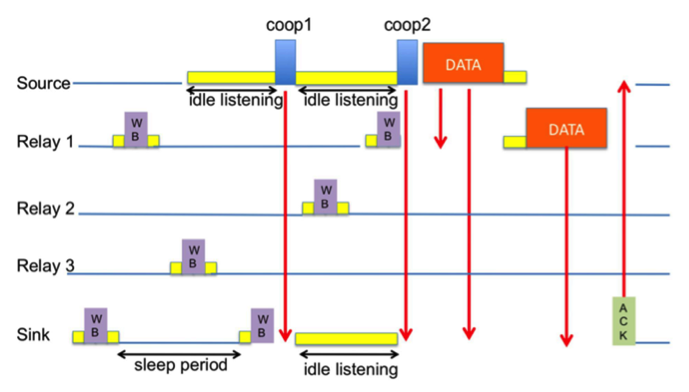Although there is obviously an enormous interest in cooperative techniques in the research community, most of the performance analysis for cooperative communication is widely studied at physical layer. In order to make cooperative techniques be able to be utilized in the next generation of wireless networks, the higher layer protocols such as medium access control (MAC) layer, routing layer, … must be thoroughly considered. Among the higher layers, MAC layer is responsible for regulating the shared wireless medium access of the networks, therefore, it has great influences on the network performance. In addition, MAC layer is also expected to improve throughput or energy efficiency, reduce delay while keeping the collisions to a minimum.
Opportunistic routing aims at exploiting sporadic radio links to improve the connectivity of multi-hop networks and to foster data transmissions. However, the benefit of opportunistic relaying may be counteracted due to energy increase resulted from multiple active receivers. Therefore, we are conducting thorough analysis of opportunistic relaying efficiency under the different realistic radio channel conditions, to find the optimal tradeoff between two objectives: energy and latency minimizations, with a hard reliability constraint.




